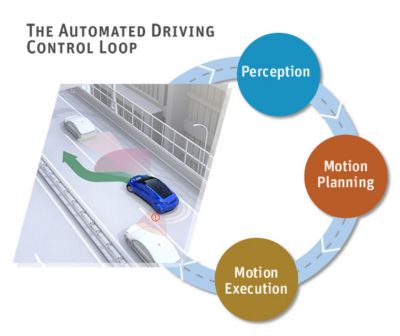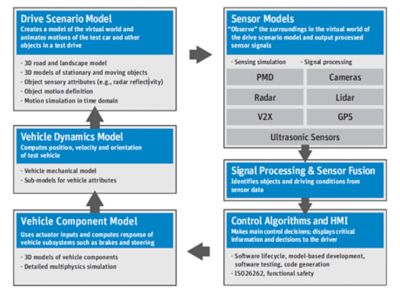-
United States -
United Kingdom -
India -
France -
Deutschland -
Italia -
日本 -
대한민국 -
中国 -
台灣
-
Ansys is committed to setting today's students up for success, by providing free simulation engineering software to students.
-
Ansys is committed to setting today's students up for success, by providing free simulation engineering software to students.
-
Ansys is committed to setting today's students up for success, by providing free simulation engineering software to students.
-
Contact Us -
Careers -
Students and Academic -
For United States and Canada
+1 844.462.6797
ANSYS BLOG
May 8, 2018
Safety First for Autonomous Vehicles
When it comes to autonomous driving, safety is imperative. But how can we test this new technology to safeguard both passengers and pedestrians? How can we subject an autonomous vehicle to every situation it may encounter to ensure it responds appropriately? No vehicle can make it to market without road testing, but how will we know when the vehicle is safe enough to begin this process? The only viable answer is simulation.
Autonomous vehicles rely on deep learning algorithms that recognize patterns and respond in a human-like manner. A vehicle must perceive its surroundings, determine the necessary action and execute the required motion — in a continuous closed-loop cycle, within an ever-changing environment. Using a combination of Ansys simulation, Ansys SCADE model-based development for embedded software, Switchboard™ automated robustness testing technology from Edge Case Research and Ansys medini for functional safety analysis, end-to-end safety for autonomous driving systems can be validated in a virtual environment.
The simulation architecture for an autonomous vehicle is very complex. It requires integrating physics, embedded systems, software development and code generation for an accurate simulation of the complete control loop. At the same time, it allows the virtual vehicle system to be exposed to both day-to-day driving scenarios and more unusual situations that a single car might be exposed to in its lifetime. The Ansys ADAS/autonomous vehicle open simulation platform can test drive multiple virtual vehicles — in many more scenarios, across billions of miles — in a much faster, safer and more economical matter (versus physical tests).
Simulation of the automated driving control loop.
For autonomous vehicles to become more pervasive with time, manufacturers must demonstrate that they can protect passengers, pedestrians, other vehicles and property. Simulation is their most important key.
Learn More
Read more about this autonomous driving simulation system in the article Drive Safely in the latest issue of Ansys Advantage magazine or visit the webpage Engineering Safety for Autonomous Vehicles.














